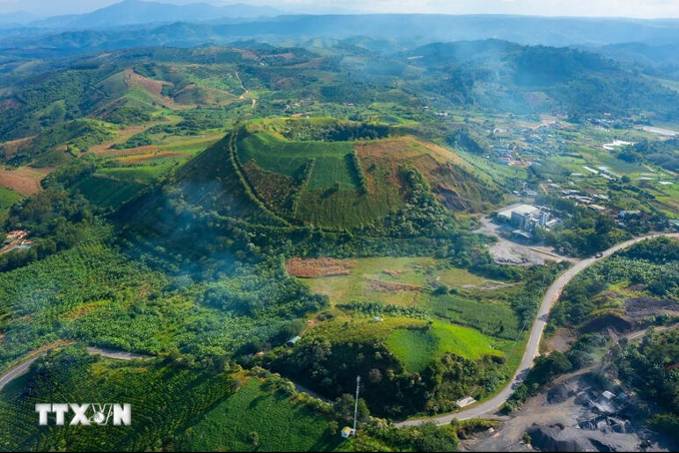Dak Nong Geopark has officially been re-recognized as a UNESCO Global Geopark for the period of 2024-2027.
According to the Earth Sciences and Geohazard Risk Reduction division of UNESCO, the decision was approved by the Global Geoparks Council during its 8th session, which took place within the 10th International Conference on UNESCO Global Geoparks in Morocco in 2023.
Representatives from the Global Geoparks Network will present the recognition certificate for Đắk Nông as a UNESCO Global Geopark to Đắk Nông province at the International Conference on the Asia-Pacific Geoparks Network, scheduled to be held in Cao Bằng province in September this year.
Dak Nong Geopark was first recognized as a UNESCO Global Geopark in July 2020, becoming the third global geopark in Viet Nam, following the Dong Van Karst Plateau Geopark in Ha Giang and the Non Nuoc Cao Bang Geopark in Cao Bang.
Covering an area of 4,760 square kilometers across the districts of KrongNo, Cu Jut, Dak Mil, Dak Song, Dak G’long, and Gia Nghia town, Dak Nong Geopark features around 65 geological and geomorphological heritage sites. This includes a system of nearly 50 caves with a total length of more than 10,000 meters, volcanic craters, and waterfalls.
 Global Geopark Dak Nong
Global Geopark Dak Nong
The area is famous for its rich red basalt soil and its tropical rainforest ecosystem, which preserves significant biodiversity. This region also holds many unique cultural, geological, and natural features, as well as traces of prehistoric human activities. The most notable feature of Dak Nong Geopark is its volcanic cave system in the Dray Sap-Chu R'Luh area. This system of volcanic caves has been recognized by the Japan Volcanic Cave Association as holding the Southeast Asian record for its scale, length, and unique features. These caves still hide many secrets about their formation mechanisms, mineral compositions, biodiversity, and archaeological sites.
Dak Nong Geopark also boasts a diverse array of mineral resources, including bauxite, antimony, placer tin, pozzolan, gemstones, and especially large deposits of opal and chalcedony.
The park's flora and fauna are abundant, with many rare and endangered species listed in both the Vietnamese and international Red Books. These include elephants, tigers, wild buffalo, and various primates such as the White-cheeked Gibbon and the Black-shanked Douc. Bird species include the Great Hornbill and the Red-faced Liocichla, while significant plant species include the Tri-cornered Oak, Pine, Vietnamese Redwood, Ironwood, and the precious Rosewood.